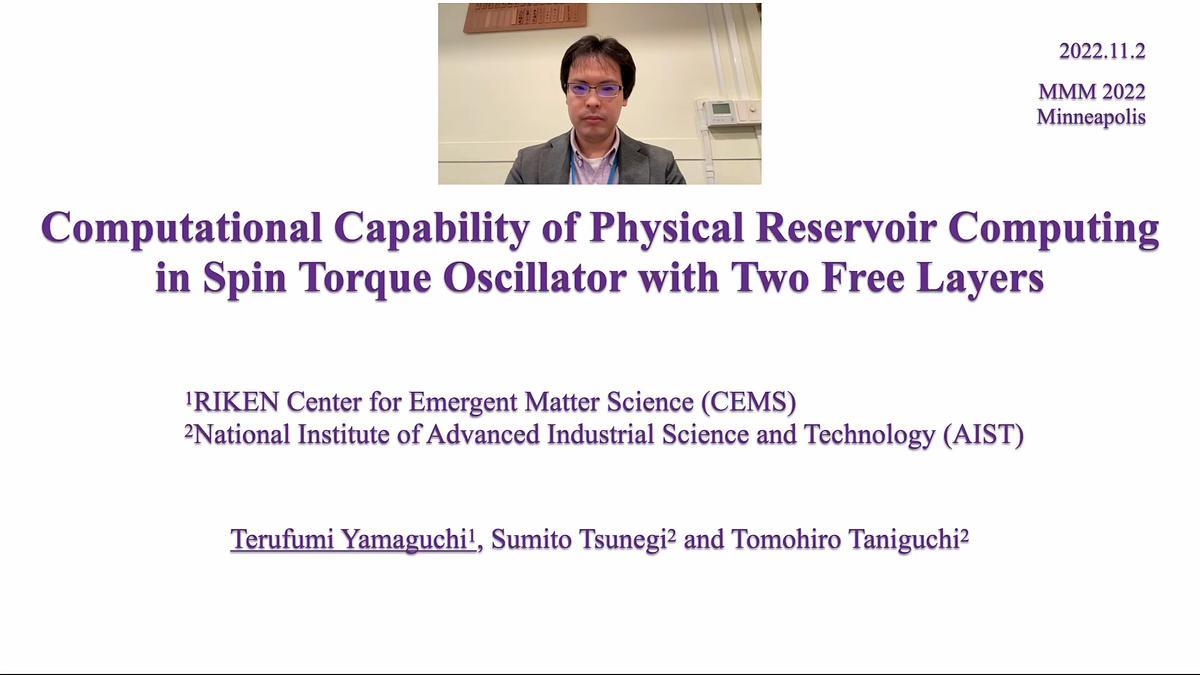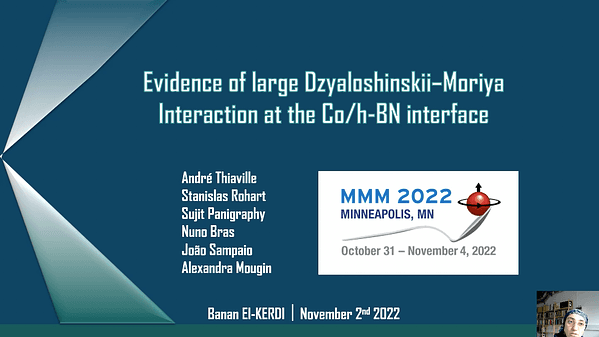
Premium content
Access to this content requires a subscription. You must be a premium user to view this content.

technical paper
Computational Capability of Physical Reservoir Computing in Spin Torque Oscillator with Two Free Layers
Applying spintronics devices to neuromorphic computing have recently gained much attention. For example, a speech recognition task using a spin-torque oscillator (STO)
and based on the algorithm of physical reservoir computing was experimentally demonstrated 1. In this experiment, the nonlinear magnetization dynamics in STO is used as a
computational resource, where the modulation of the dynamics due to the injection of human voice, converted to electric voltage, is used to recognize the input data. Therefore, it is
essential to investigate the relationship between the physical properties reflected in the magnetization dynamics and the computational capability of physical reservoir computing.
It has been widely believed that the computational capability of physical reservoir computing is enhanced at the edges of chaos because complex dynamics near the chaos is useful to
distinguish several kinds of input data. However, the physical reservoir computing in previous works has been performed in the dynamical state far away from chaos. Therefore, the
computational capability of STO near the edge of chaos is still unclear.
In this work, we investigated the relationship between the dynamical properties of STO and the computational capability in reservoir computing. We consider two kinds of STO, where the
one is a conventional STO consisting of a pinned (P) and free (F) layer, while the other, P/F/F, includes two free layers; see Fig. 1. This is because, in principle, the former cannot show
chaos while the latter has a possibility to show chaotic dynamics, and therefore, the comparison between them is useful to study the role of the chaos on the computational capability. We
evaluate the short-term memory capacity 2 as a figure of merit and the Lyapunov exponent 3 to distinguish the dynamical state. It was found that the short-term memory capacity in
P/F/F STO is greatly enhanced near the edge of chaos (see Fig. 2) and becomes much larger than the maximum value of the capacity in the conventional P/F STO.
References 1 J. Torrejon et al., Nature 547, 428 (2017).
2 K. Fujii and K. Nakajima, Phys. Rev. Applied 8, 024030 (2017).
3 S. H. Strogatz, Nonlinear Dynamics and Chaos: With Applications to Physics, Biology, Chemistry, and Engineering (Westview Press, Boulder, CO, 2001).

Fig.1 Conceptual picture of (a) P/F and (b) P/F/F.

Fig.2 (a) Short-term memory capacity and (b) Lyapunov exponent in P/F/F combination.

